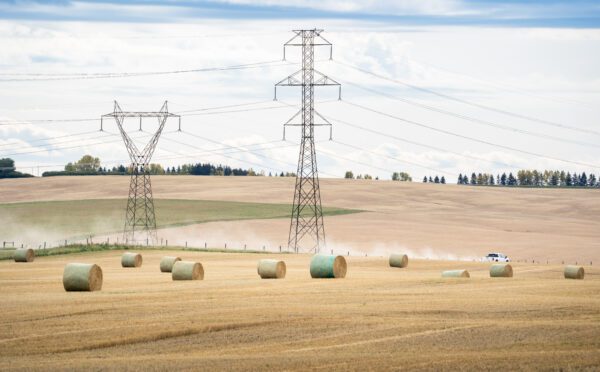Authors
Partner, Regulatory, Indigenous and Environmental, Toronto
Associate, Disputes, Toronto
Associate, Disputes, Toronto
Partner, Commercial, Toronto

On April 7, 2022, the Government of Ontario published its first Low-Carbon Hydrogen Strategy (the Strategy), which sets out the province’s vision and expectations for the growing hydrogen sector in the province. The Strategy includes a number of proposed actions to enable hydrogen production and expand the burgeoning low-carbon hydrogen economy, including launching innovative projects, identifying hydrogen hubs and proposing related changes to regulatory frameworks and policies.
In this blog post, we identify key takeaways from the Strategy and discuss the implications for stakeholders.
Background
Hydrogen is a colourless and odourless element that makes up about 75% of mass in the universe and is found in many materials, including water. To create pure hydrogen, energy is required to separate hydrogen from the other elements to which it commonly bonds.
Pure hydrogen can be made through a process called steam methane reformation, in which high-temperature steam is used to produce hydrogen from a methane source, such as natural gas. Hydrogen produced through steam methane reformation has a higher carbon footprint, as it releases greenhouse gases (carbon dioxide and carbon monoxide) into the atmosphere, unless those gases are captured and subsequently utilized or stored. “Low-carbon” hydrogen, which is made from carbon-free electricity sources (e.g., nuclear, hydroelectric, wind and solar) via electrolysis (breaking water into hydrogen and oxygen), currently represents only 0.5% of the global market share.
One of the impediments to low-carbon hydrogen in Ontario and elsewhere has been the cost differential between producing hydrogen using electricity versus using natural gas. To address that impediment, the Strategy seeks to support technologies and business models that can improve the cost competitiveness of low-carbon hydrogen production in Ontario.
The Strategy also seeks to leverage existing and planned storage and pipeline infrastructure that has the potential to store and deliver hydrogen. These assets include Ontario’s existing natural gas pipeline network; the geologic salt layers in Southwestern Ontario, which are suitable for storing hydrogen deep underground and currently serve the petrochemical industry; and Ontario’s underground natural gas storage, which has the second largest capacity in Canada. The Strrategy describes blending low-carbon hydrogen into the natural gas system as a safe and effective way to leverage low-carbon hydrogen.
Ontario has also identified existing biofuel resources, which can be used to create low-carbon hydrogen or other renewable fuels. Specifically, the existing forest products manufacturing infrastructure in Ontario can be leveraged for the development of new bioproducts. Additionally, bioenergy production from low-grade forest biomass can be used to produce low-carbon hydrogen along with renewable natural gas. Food and organic waste can also be converted into low-carbon hydrogen.
Strategy initiatives
The Strategy lists eight specific action items, including investments, policy changes and regulatory proposals, that would support hydrogen production and expand the low-carbon hydrogen economy. Through these actions, Ontario expects to increase the annual production capacity of low-carbon hydrogen significantly and support the hydrogen sector:
The Niagara Falls hydrogen production pilot
Atura Power, a wholly owned subsidiary of Ontario Power Generation, proposes to build, own and operate the province’s largest low-carbon hydrogen production facility in Niagara Falls. The proposed facility would include a 20-MW electrolyzer, which would use electricity primarily sourced from the Sir Adam Beck Hydroelectric Generating Station on the Niagara River. The hydrogen produced at this facility is anticipated to be used for heavy-duty trucking, for municipal mobility and by heavy industrial customers in Ontario, taking into account Niagara’s strong industrial base and its proximity to end users in both the Greater Toronto Area and upstate New York.
The Niagara facility is proposed to be supported through a regulatory exemption to the Gross Revenue Charge (GRC), which the Government of Ontario filed in January 2022. The regulation provides GRC property tax and waterpower rental charge savings from 2024–2033 for electricity generated at the Sir Adam Beck station used specifically for hydrogen production. If successful, the facility is expected to achieve commercial operations by the end of 2023.
Identifying Ontario’s hydrogen hub communities
In addition to the Niagara region, Atura Power has identified four other locations across the province where existing electricity infrastructure and Ontario’s electricity grid can be leveraged to produce hydrogen using electrolysis technology:
- Halton Hills Energy Centre, which is being assessed as a potential production site and home for a 20-MW electrolyzer, and has the potential to provide hydrogen to trucking and logistics companies, taking into account its location at the intersection of Highways 401 and 407
- Nanticoke Hydrogen Centre, which is assessing opportunities to convert the former Nanticoke coal-fired generation site into a low-carbon hydrogen production facility to support the decarbonization of existing heavy industrial consumers located on Lake Erie
- Brighton Beach Energy Centre and Hydrogen Salt Cavern Storage, which is being assessed for hydrogen production and large-scale sub-surface hydrogen storage at Brighton Beach (near Windsor), one of the few locations in Ontario with geology suitable for underground cavern storage of hydrogen
- Lambton Hydrogen Centre, which is being assessed for its potential to convert the former site of the Lambton Generating Station into a large-scale low-carbon hydrogen production facility to serve heavy industry in the Sarnia–Lambton area
These locations are now the subject of funding applications with the federal government. In addition to these hubs, the Ministry of Energy plans to undertake its own feasibility study to explore similar opportunities.
Assessing hydrogen opportunities at Bruce Power
Bruce Nuclear Generating Station, Ontario’s largest nuclear facility, plans to leverage excess energy from the Station for hydrogen production. These plans will begin with a Hydrogen Opportunities Study in 2022, to be completed in 2023, in order to recommend how this asset can be used for hydrogen production. The Bruce Power Centre for Next Generation Nuclear at the Nuclear Innovation Institute is also looking into opportunities to maximize the impact of Bruce Power’s assets through different activities.
Developing an interruptible electricity rate
Ontario is exploring reduced electricity rates for hydrogen producers for the use of surplus electricity, such as electricity that would otherwise be spilled hydropower or curtailed wind power. The initiative would begin with the Interruptible Rate pilot, which would offer large electricity consumers reduced electricity rates in exchange for agreeing to reduce consumption during system or local reliability events, as identified by the Independent Electricity System Operator (IESO). Consultations with stakeholders on this proposal are underway.
Supporting hydrogen storage and grid integration pilot projects
The Ministry of Energy has asked the IESO to investigate and propose potential program options to integrate low-carbon hydrogen technologies into Ontario’s electricity grid. The goal of these programs is to help balance and strengthen Ontario’s electricity system and contributing to broader decarbonization. The Minister has asked the IESO to report back to the Ministry of Energy by October 31, 2022, with program options, timelines and costs, as well any additional advice the IESO may have on how to proceed.
Transitioning industry through the use of low-carbon hydrogen
This action item includes the transition from the use of coal to low-carbon processes. In February 2022, Ontario invested in a $1.765-billion project at ArcelorMittal Dofasco’s facility in Hamilton to replace coal-fed furnaces with a hydrogen-ready electric arc furnace.
Consulting on an Ontario carbon sequestration and storage regulatory framework
The Ministry of Northern Development, Mines, Natural Resources and Forestry is proposing changes to the Oil, Gas and Salt Resources Act and the Mining Act frameworks that would clarify the regulatory framework under which carbon storage is permitted and allow the Ministry to grant authorizations to use Crown land for carbon storage activities. It would also give the Ministry the ability to enter into agreements with companies that want to use wells to explore, test, pilot or demonstrate new technologies, such as carbon storage.
These legislative changes could support hydrogen production using steam methane reformation, as the hydrogen made from natural gas could be paired with carbon capture, utilization and storage to keep most of the carbon dioxide from its production from entering the atmosphere.
Supporting hydrogen research
The final action item describes two independent hydrogen research projects which are being undertaken by Ontario in partnership with Natural Resources Canada to advance hydrogen development. The first is a comprehensive study by H2GO Canada, which seeks to identify low-carbon hydrogen supply opportunities. The second involves H2GO Canada’s evaluation of seasonal storage of hydrogen and permanent sequestration of CO2 within Ontario’s geological prospects. H2GO Canada will also be launching Hydrogen Village in spring 2022, a resource centre providing information, education and assistance on developing hydrogen products and using hydrogen technologies, with three initial program streams in the Greater Toronto and Hamilton Area.
Looking ahead
As discussed in a previous blog post, the momentum behind hydrogen development is growing, both in Canada and globally. The federal government and other provinces have published hydrogen roadmaps and, with the addition of Ontario’s Strategy, Canada’s hydrogen economy is expected to contribute up to 30% of national fuel and feedstock by 2050, create approximately 350,000 jobs and remove up to 190 megatonnes of greenhouse gas emissions per year. In Ontario alone, the Strategy indicates that by 2050, the hydrogen sector could employ over 100,000 Ontarians and result in 50 megatonnes per year of greenhouse gas emissions.
As the momentum behind hydrogen continues to build, the actions and next steps described in the Strategy will help create the framework for new business opportunities in Ontario in 2022 and beyond. Market participants should watch for additional announcements projected in the Strategy, including actions to support Ontario’s low-carbon hydrogen supply chain, addressing regulatory barriers and gaps for the generation and use of hydrogen and assessing scenarios to accelerate the adoption of low-carbon hydrogen technology. The Strategy and future announcements from the Government of Ontario seek to position the province as a leader in the hydrogen sector, with private industry clearly envisioned to play an integral role in achieving this objective.

